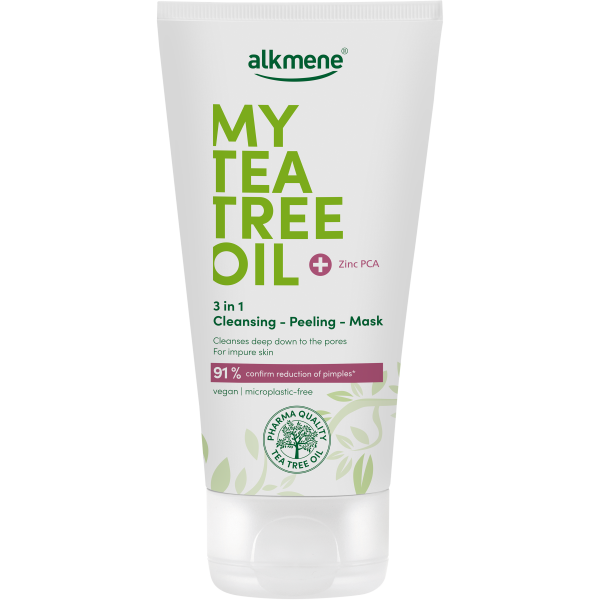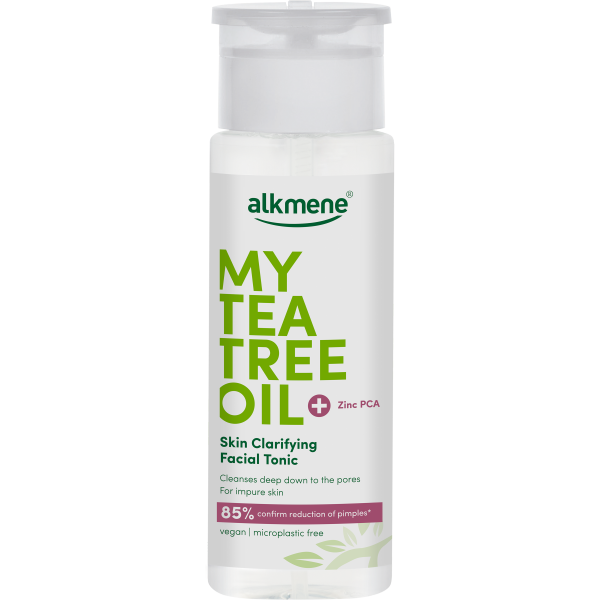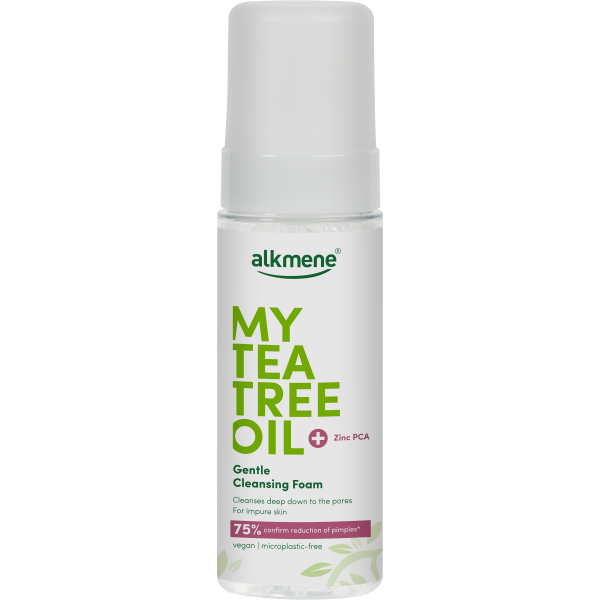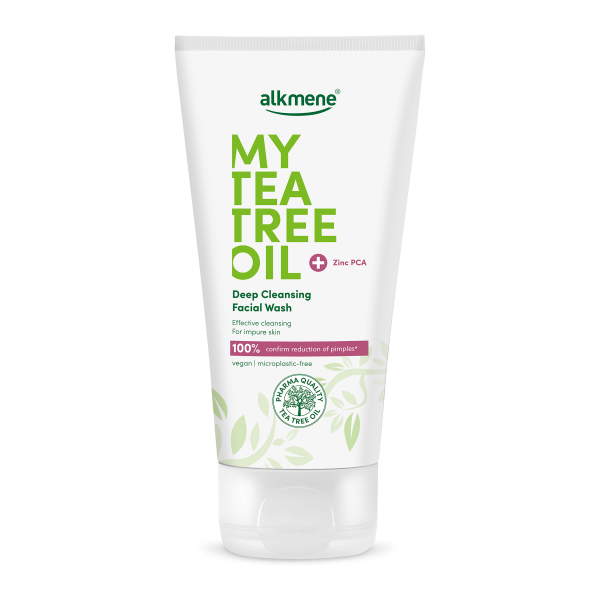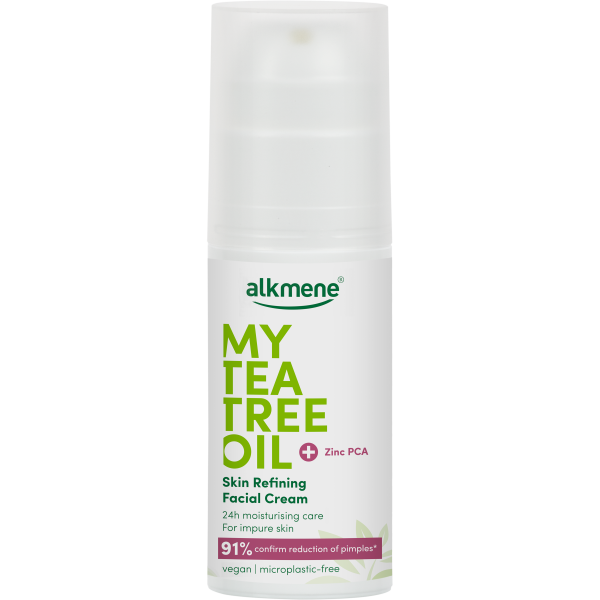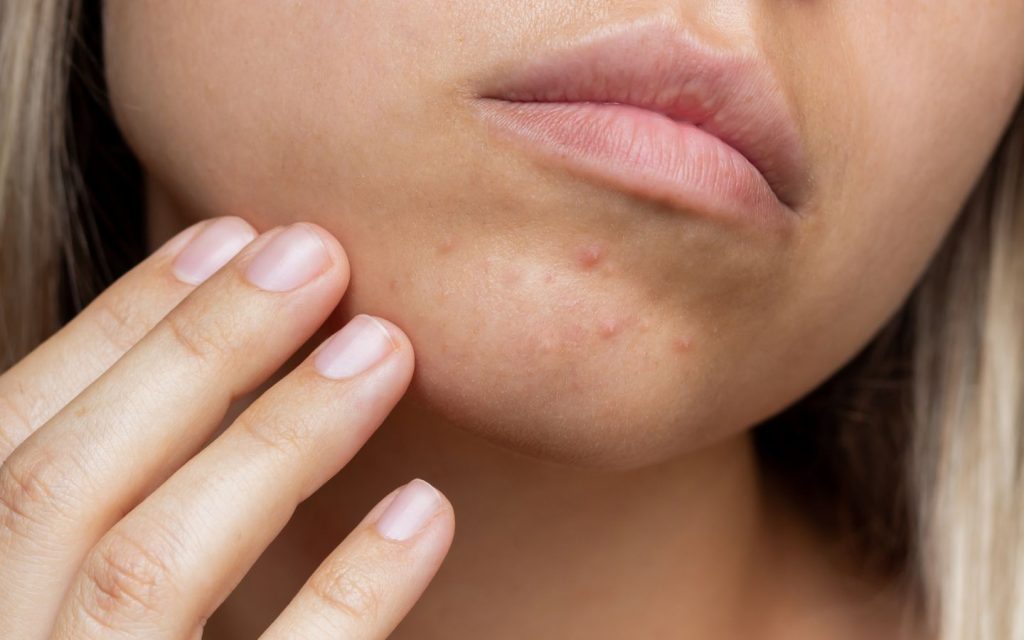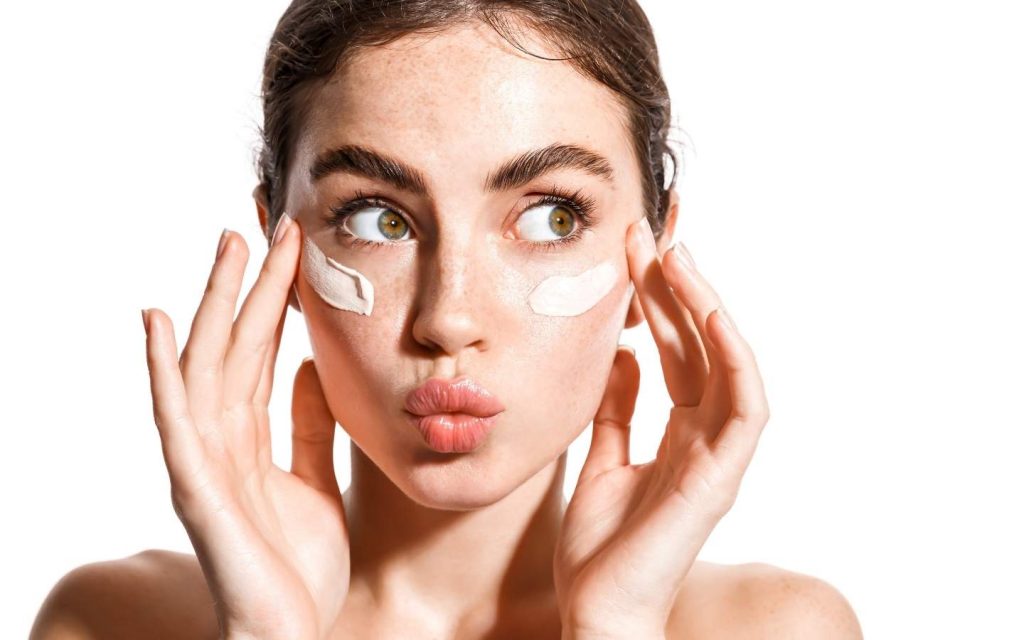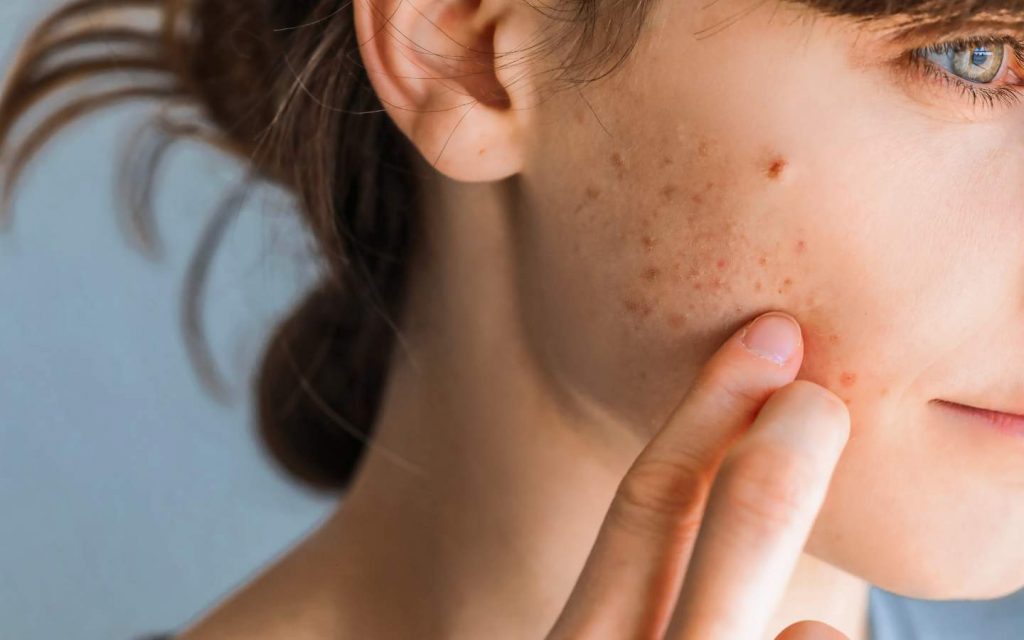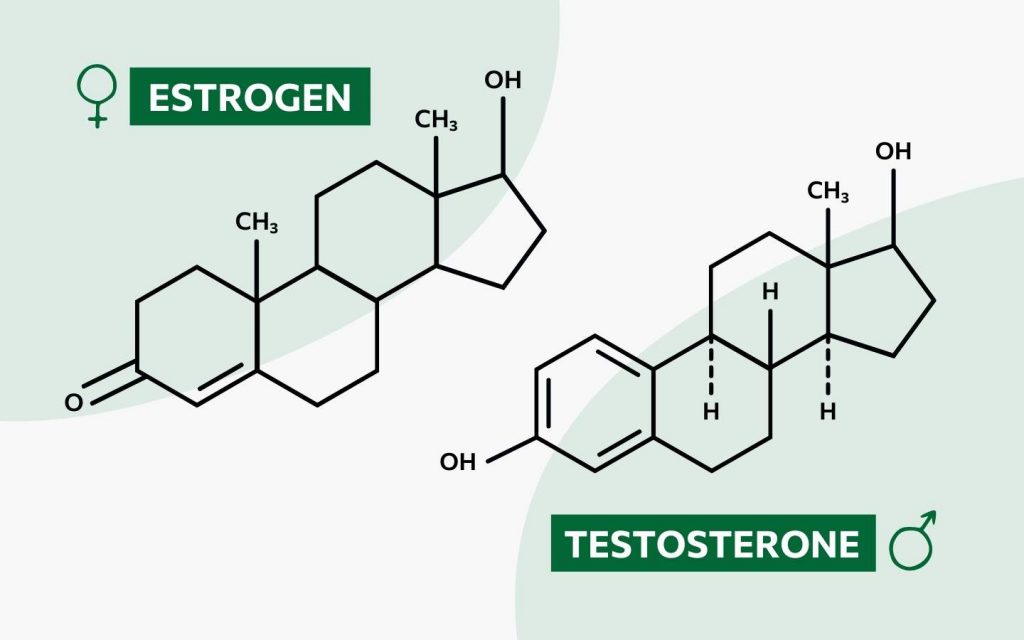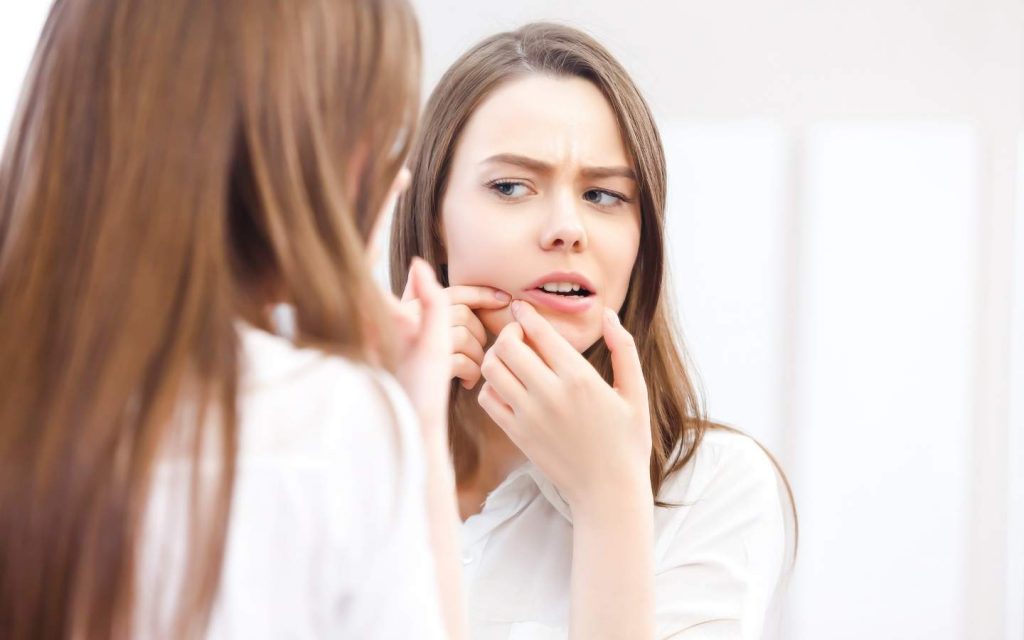


This article has been reviewed by:
Alexandra Beck
Cosmetician
Your skin is acting up again and you can’t explain why? You probably know that greasy food, stress at work or the wrong skin care products can affect your skin. (Otherwise, we recommend you read this article on “Causes of blemished skin”). However, beyond that, blemishes like pimples and blackheads can also be related to ovulation. The reason for this is that the monthly menstrual cycle as well as the hormonal processes in the body can have a strong influence on the skin. With the help of our skin cycle calendar, we explain below why pimples after ovulation are quite normal and how an adapted care routine can help.
The menstrual cycle: When hormones ride a roller coaster
In order to understand why pimples may appear after ovulation, it is necessary to keep in mind the menstrual cycle. Within this cycle, which lasts an average of 28 days, different phases are passed through. These four phases are in turn controlled by the hormones FSH (follicle stimulating hormone), estrogen, progesterone and LH (luteinizing hormone). Because the different concentrations of the hormones affect the sebaceous glands, moisture balance and blood circulation in the skin, pimples or radiantly beautiful skin can develop depending on the phase.

Pimples after ovulation are triggered by the strong hormonal fluctuations.

Hormone levels during the menstrual cycle. LH, also called luteinizing hormone, triggers ovulation. Follicle-stimulating hormone (FSH) supports the maturation and implantation of the egg.
The four phases - from pimples after ovulation to a radiant complexion
The menstrual phase is the beginning of the cycle. During this time, hormones are at an all-time low, which means that the skin is dry and can appear dull. While new pimples do not usually form during this phase, the skin is very sensitive and lacks moisture due to reduced sebum production. In order not to stress the sensitive skin, you should not try any new products or use aggressive peelings during this phase. Instead, use mild cleansing and care products or masks that moisturize the skin.
The follicular phase begins with the first day after the period. The body prepares for fertilization of the egg. A follicle is formed and the uterine lining is built up. During this period, not only the concentration of the hormone estrogen increases, but also collagen production is boosted. Both have a positive effect on the complexion of the skin. For this reason, the skin looks rosier and plumper than usual during the follicular phase. Because the skin usually clears up on its own, this is the ideal time for peeling. Exfoliation removes dead skin cells and cleanses the skin in the best possible way.
In the middle of the cycle, during ovulation, the estrogen level reaches its highest level. In addition, there is also a slightly increased testosterone level. This leads to your skin being at its absolute prime in the cycle. Your skin is radiant, plump and appears purer due to the balanced hormone levels.
In the phase after ovulation, there is a turning point in the cycle. Although the estrogen level decreases if the follicle has not been fertilized, the testosterone concentration increases at the same time. As a result of the high amount of testosterone, the sebaceous glands are stimulated to produce more sebum. This can lead to greasy skin, clogged pores and pimples after ovulation. Hormonal acne or menstrual acne can also occur during this phase.
Now you should pay particular attention to cleaning your face regularly to unclog pores with sebum. It is best to use special products for this purpose. For example, a clarifying toner that removes excess sebum and dirt from the skin and cleanses the pores. This is the ideal way to combat pimples that appear after ovulation.
The cycle skin calendar

Conclusion: Pimples after ovulation cannot be avoided, but they can be combated
The fact that more pimples appear after ovulation in your cycle is mainly due to the high testosterone level during this phase. This promotes sebum production, which can lead to blemishes and so-called menstrual acne.
However, it should be noted that the cycle phases or the cycle length can differ from woman to woman. Thus, the cycle phases may well start a few days early or late. Cycle calendars, for example, are a good way to get an overview of your own cycle. We also advise you to take more care of your skin around the time window of the luteal phase.
Is an acute pimple bothering you and you have a special appointment? The MY TEA TREE OIL Anti Spot Stick with the active combination of tea tree oil and zinc PCA is proven to reduce pimples, blackheads and redness in 2 hours, for a pore-deep clean and refined skin.
![]()
